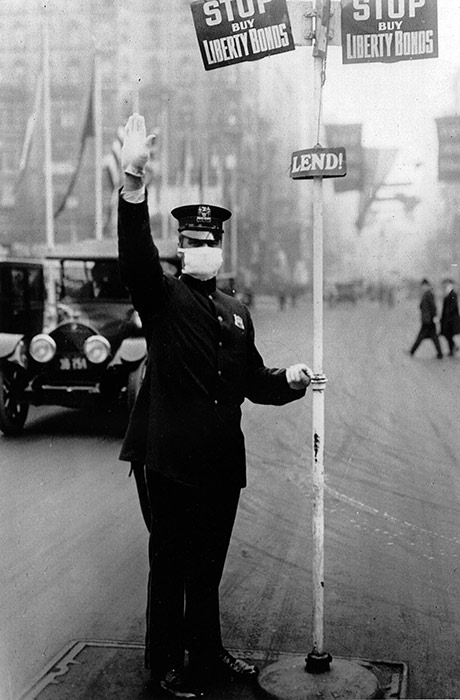
We are in the midst of a pandemic caused by a virus that currently has no antidote. This was a similar premise to what happened one hundred years ago with the influenza pandemic that lasted 23 months commencing in January 1918. Also called the Spanish Flu, this was the same H1N1 influenza virus that was involved with the 2009 swine flu.
In the 1918 influenza pandemic 27 percent of the world’s population was infected, with the death toll being estimated between 17 million to 50 million, as epidemiological records were not kept at that time. Life expectancy plummeted by twelve years in 1918 as this pandemic killed a high number of young people as well as the old.
I was raised with a first hand account of the 1918 influenza pandemic from my New York City born and raised grandmother. She was the city’s July 4th baby in 1910, and was eight years old when the epidemic reached New York City. She recalled the death toll from the flu, the isolation, and the length of time (18 months) that this virus took hold of her world.
While New York City’s flu death toll approached 30,000 people, the mortality rate per 1,000 was 4.7, much lower than Boston’s which was 6.5 deaths per 1,000 people and Philadelphia’s at 7.3 per 1,000 people.
What made the difference for New York City was a “robust” and organized public health infrastructure, distancing of the healthy from the infected, a public health campaign and disease surveillance.
Using the model of how the City approached tuberculosis control, public spaces, schools and theatres were regulated . The 1918 influenza pandemic was the first “acute” public health crisis in modern times.
New York City’s government implemented staggered business hours to lessen the bustle of people at rush hour, and set up 150 emergency “health districts and centres” to provide nursing care and case work reporting. By setting up neighbourhood health centres home care nurses could work at a more neighbourhood level to provide needed community services. Armories, gyms and a homeless shelter were converted to makeshift hospitals and a maritime quarantine established for New York City bound boats.
Public health campaigns insisted citizens cover their mouths when sneezing, and suggested distancing citizens from one another in the public realm.
The 1918 flu pandemic in New York City used methods established with tuberculosis treatment to establish a public health approach. Over 10,000 posters were distributed banning public “spitting” and reminding citizens to maintain good hygiene, recognize symptoms, and isolate themselves if infected. Improved sanitary conditions had been an outcome of a tuberculosis outbreak in the 1900’s. New tenement house reform laws now required good ventilation, and the City stepped up efforts to clean streets and to pick up garbage.
Here’s a YouTube video by professor and author of the book “The Great Influenza” John Barry on how the Spanish Flu spread and what the governmental response was. Barry also comments on the Corona Virus and urges “social distancing” as a way to eliminate the current pandemic.











